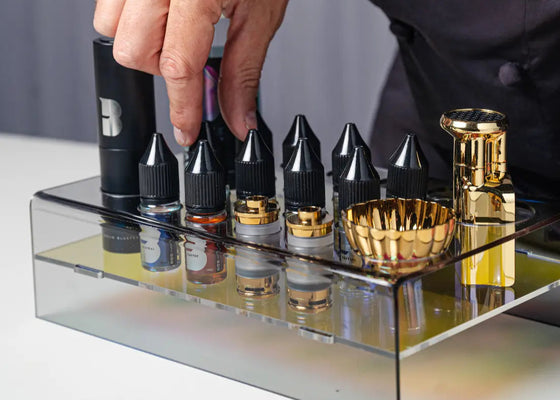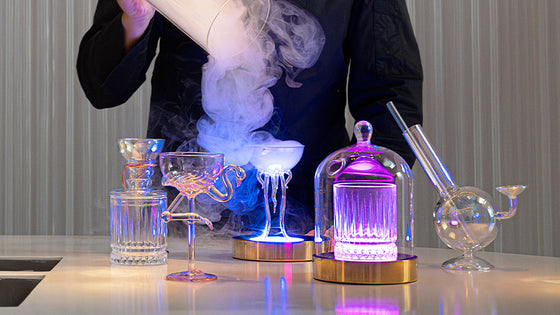How Coconuts Crept onto Cocktail Menus Around the World
In the western world, the coconut is a symbol of beach vacations the world over. Images of people drinking garnish-laden cocktails straight from a coconut shell proliferate Instagram. Most people in the West don't use coconut so much in cooking but ask them what their favourite cocktail is, and a typical response is the Piña Colada. So how did the coconut become so prolific in western cocktail culture, and is coconut here to stay as a cocktail ingredient?

Salty Sea Dogs Discover Coconuts
As the '70s novelty song by Harry Nilsson goes, "you put the lime in the coconut and drink 'em both together."
This is actually very sound medical advice if you find yourself aboard a ship for several days. Lime, as we know, was given to sailors to prevent scurvy, a nasty disease that, among other symptoms, reduces the collagen in your body so that scar tissue degrades and **shudder** old wounds reopen. And according to some modern companies, coconut water is the ideal treatment for dehydration. Plus, coconut meat has many uses beyond garnishing your muesli. Sea explorers would have used both limes and coconuts to flavour their spritus concoctions.
Cocktail expert and writer Jeff Beach Bum Berry suggests that 1700s-era sailors would sneak local liquor aboard ships in the tropics by emptying a coconut and refilling it with alcohol. They'd sip through a hole in the nut, which looked to ship officers as if they were innocently drinking coconut water.
One pirate in the 1800s is arguably the first person to serve a Piña Colada-like recipe. Roberto Cofresí, also known as El Pirata Cofresí, came from a wealthy background but became a pirate after being repeatedly mistreated by the Spanish and British. He became known as a sort of Caribbean Robin Hood, stealing from merchants and redistributing their riches to the poor of Puerto Rico.
He supposedly served his shipmates a form of cocktail in which he mixed rum, coconut milk, and pineapple juice. Sadly, Cofresí died in 1825, and the recipe was forever buried with him.
Coconuts in the Caribbean
Of course, as long as there have been local resources, the local people have always utilised them. The Batida de Coco is a Brazilian coconut cocktail that is one recognisable recipe among a slew of more general variations on a coconut rum punch. But Coconuts were not cultivated commercially on a large scale in the Caribbean as a cash crop until the 18th century.
Coconut palms are so ingrained in everyone's mental image of a Caribbean landscape that they appear to have always existed. But in fact, they are imported. The Spanish discovered coconuts on Central America's WEST coast. Spanish and other European colonisers introduced them to the Caribbean region during the first half of the 16th century.
Puerto Rico was one of the many islands Christopher Columbus stumbled through on his mission to find riches in the New World. He found gold on the island, but less than a hundred years later, the mines were utterly depleted. Spain was left with an island that was a target of hurricanes, disease, and conflict with other countries looking for territories in the Americas.
It was not until the 18th century that the true treasure of Puerto Rico was discovered: agriculture. The island began to produce sugar, coffee, and tobacco at astounding rates. All were cash crops putting money in Spain's pocket until the last days of the 19th century when they were forced to give it to the United States after the Spanish American War.
In 1880 the first commercial rum distillery opened on the island, and Puerto Ricans began to distil their own rum brands. Once America was given charge in 1898, Uncle Sam's connections and cash provided the island with its first continuous still, which led to the predominance of a clean, clear style of rum.
There were some mentions of a 'Piña Colada' in the 1920s, but no recipes were found. It wasn't until the 1950s that Coco Lopez, a creamy coconut syrup, was invented. Americans were holidaying at the newly built Hilton hotel, and the pressure was on the bar team to create a memorable experience. The whole history of the island was building up to one major event in cocktail history: the creation of their national drink, the Piña Colada.
Everyone can agree that the Piña Colada as we know it today was created sometime in the mid-1950s or early 1960s. Its popularity spread alongside the availability of Coco Lopez.
Tikki Takes On Coconut Mythology
Fort Lauderdale's Mai-Kai Restaurant's Moonkist Coconut cocktail has been on the menu since the restaurant opened in 1956. But how has this cocktail had such longevity?
Well, it's in the Western Pacific Austronesian and Asian cultures where coconut originates, and coconut imagery features heavily in mythologies, songs, and oral traditions. And it took a bootlegging ship jumping flaneur of the South Seas to make the Pacific Islands style world famous.
When Prohibition ended in 1933, Ernest Raymond Gantt opened a bar in Hollywood called Don's Beachcomber. With its success, he began calling himself Don the Beachcomber and legally changed his name to Donn Beach. In 1937, the bar moved across the street to 1727 N. McCadden Pl, expanded into a restaurant, and its name was changed to Don The Beachcomber.
He mixed potent rum cocktails at both of these tropically-decorated locations. He used coconut palms, nuts and bark to add texture and decorate his bars. And together with his bar style, the nostalgia of US GIs stationed on South Pacific Islands, and the popularity of the South Pacific musical, the idea of a 'tropical getaway' was officially a part of American pop culture.
However, Tikki cocktails containing coconut couldn't take off until the invention of another widely available ingredient; coconut rum.

Coconut Cocktails Creep onto Menus Around the World
Co-founders Peter Fleck and James Espey were working for International Distillers & Vintners when they launched a brand they had been working on in South Africa in 1973. The pair introduced spirits entrepreneur Tom Jago to a light, coconut-flavoured rum drink called Coco Rico.
The potential was ripe for the taking. The liqueur tasted like a summer holiday in a bottle and needed to be brought to the wider world. They chose to change the name to Malibu because they thought it "sounds like warmth".
The trio decided to sell the product in white bottles, but they couldn't source any in the late 70s, so they had to spray clear ones instead. They created a conveyor belt with the bottles hung upside down, spray painted by a man whose specialist job was to paint new fridges white.
They gave the product the slogan "It comes from paradise and tastes like heaven" and launched without permission, market testing or a budget. Fortunately, people liked it, so they eventually got thumbs up from their directors. Last year, Malibu sold nearly 5 million 9-litre cases.
Suddenly bartenders could make Tiki cocktails like the Bahama Mama and the Goombay Smash anywhere in the world, and coconut cocktails continued their world domination.
Innovation and Versatility
So now we have coconut water, coconut flesh, coconut syrup or cream and coconut rum as potential cocktail ingredients. That's a versatile list from just one fruit, with each component offering a different aroma, texture and taste. Add to that the fact that you can use the shell as a glass, and you have a pretty sustainable ingredient that deserves its longevity and popularity well.
Now, there is another notch on the coconut cocktail timeline. Flavour Blaster has brought out a coconut aroma, so you can add aromatised vapour to your drinks, spreading the potential of coconut into the realms of scented garnish. Get yours on our website and send us your recipes via Instagram or Facebook.
















